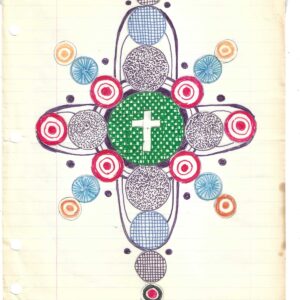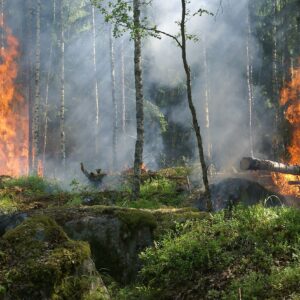It holds up really, really well.
That’s been my reaction to reading Cleanth Brooks’ 1947 classic The Well Wrought Urn: Studies in the Structure of Poetry, one of the key works that in the post-World War II decades established “close reading” as the main pedagogical tool for understanding poetry as a unified whole (rather than an artfully coded record of attitudes requiring historical and biographical translation).
Yes, Brooks’ tone can be irritating, a tone echoing the self-consciously clever patois of English Department colloquia back in the day. And the rhetorical opponents with which Brooks does battle seem quaint: the “paraphrastic heresy,” for example (the idea that any poem’s meaning can be reduced to an unambiguous declarative statement). Or the notion that “ambiguity” itself (or “irony” and “paradox”) is a mere verbal window-dressing.
But Brooks’ readings of individual poems—a deliberately wide selection of works from the Western white male canon—Donne, Keats, Pope, Wordsworth, etc.—are brilliant. Each reading persuasively shows how vital such terms as ambiguity, irony, and paradox become when applied to the way great poetry, through a “dramatic process,” works to achieve what Brooks calls an “equilibrium of forces, not a formula.”
So what, though? Granted that close reading in expert hands like Cleanth Brooks’ meets and overcomes the challenges of the paraphrastic heresy and other twentieth century false gods, why assume it can have value today, when the challenges to it aren’t merely stuffily academic but militantly political and ideological? In many academic departments today, the battle has already been lost, and close reading relegated to a superseded literary fashion, attractive only to die-hards and (presumably) conservative contrarians.
Here’s a fun thought experiment: What if those who dismiss close reading were asked to consider a poem directly challenging their certainty that only ideological correctness matters? Or perhaps not “directly,” but, as Brooks would say, “ironically”? Would they even acknowledge a challenge of that kind? Would they wonder if an ironic challenge could even be a challenge at all?
Here is the poem I would propose for such an experiment: a neglected sonnet by Robert Frost entitled “Time Out.” First read in public by Frost 1941, during close reading’s heyday, “Time Out” would be the kind of poem Brooks easily could have included in The Well Wrought Urn. Playing with and within the strict form of the English sonnet, Frost contrives a step-wise heightening of the implications of the word “slant” or “slope” to mimic the speaker’s ascent of a Vermont mountainside.
At the lowest level of the first quatrain, all is huffing and puffing and plodding literalism until:
It took that pause to make him realize The mountain he was climbing had a slant As of a book held up before his eyes (And was a text, albeit done in plant).
The speaker’s embrace of the plant analogy then becomes a bit too passionate, perhaps. He begins to sound as if he’s no longer on a mountainside but inside the covers of a Peterson Field Guide spiced up by a flourish of alliteration:
Dwarf cornel, goldthread, and maianthemum He followingly fingered as he read, The flowers fading on the seed to come;
There should have been more fancy “f’”s in the next line, the eighth, to finish the rhyme scheme of the second quatrain. But, thankfully, something else happens. There’s another pause. Then the diction drops, hard:
But the thing was the slope it gave his head:
It’s as if the poet, having lost his way on the flowery mountainside, suddenly realizes he needs to descend into slang (“the thing was”) to find his path again. When he resumes—
The same for reading as it was for thought,
—he’s made a critical course correction. The analogy he sees now isn’t between one kind of text and another. It’s between one kind of obliqueness and another. Thanks to this latest pause he’s free to move swiftly upward again, and, with increasing altitude, gains not only a broader outlook but a deeper insight into the fullest implications of seeing things slant:
So different from the hard and level stare Of enemies defied and battles fought.
The full force of the “slant” or “slope” analogy now reveals itself. Those who do not make the climb remain at the base, at a “level” where all relationships begin and remain in rivalrously binary (either/or) form as between “enemies defied” and their “battles fought.” No room for ambiguity, irony, and paradox when the Other is staring right at you, and you can only stare back. En garde!
Is there an alternative? According to the base’s binary scheme, the alternative would have to be “yielding” or “passive” or even “weak” or “flaccid” or worse. But from the perspective gained after this long climb up one analogy after another, a different alternative comes into view, one that combines both extremes of the binary into a single paradox:
It was the obstinately gentle air That may be clamored at by cause and sect But it will have its moment to reflect.
Even here, though, the poem’s resistance to binaries plays out. “Obstinately gentle” may seem to combine equal and opposite elements of meaning (rude stubbornness and bad breeding as against mild, well-bred accommodation). But the phrase actually subordinates one element of the paradox to the other. “Obstinately” is a modifying adverb and so plays second fiddle to the word it modifies, “gentle.” So if this is a paradox, it is a paradox on the slant. The dominant attitude is gentleness. Obstinacy isn’t in competition with gentleness; it’s a way of maintaining gentleness when gentleness “may be clamored at by cause and sect.”
And why would “cause and sect” make such a fuss? Because by insisting on that “moment to reflect,” anyone breathing that “obstinately gentle air” would be refusing to play the binary game. She would be exposing the rivalrous battling between causes and sects at the mountain’s base for the hopelessly self-perpetuating binaries they are: deadly ideological opponents self-locked into perpetual war.
I suggested earlier that Cleanth Brooks could easily have discussed this sonnet in The Well Wrought Urn. Now I’m prepared to say that he missed a chance by not doing so. Frost’s sonnet might have given him an opportunity to broaden his claim for the value of close reading. Not only could he show close reading’s power to oppose the ogre of the paraphrastic heresy. He could have hinted at its capacity to counter a far more dangerous threat: the tendency of even the most intelligent and well-educated readers and writers to ideological binaries, whether political (“cause”) or religious (“sect”) or any combination thereof.
Brooks would have had to huff and puff his way a little further up the slope of the mountain to do so. But, following Frost, he could have gotten there and gotten a lungful of that “obstinately gentle air.”
After getting his PhD in English literature, George Dardess taught close reading to his own students until his retirement. Since then he has been ordained a Deacon in the Roman Catholic Church and written several books on Muslim-Christian relations.





